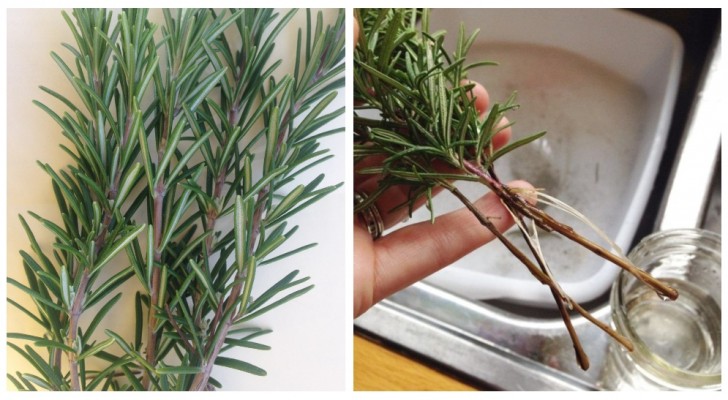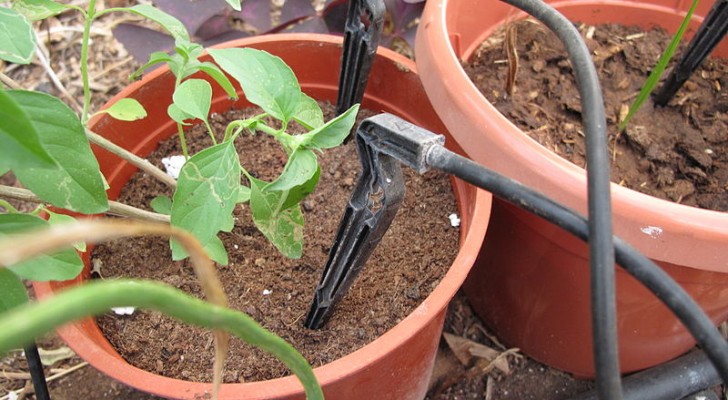Put sprigs of rosemary in water to grow new plants at no cost

Rosemary is one of the most famous aromatic herbs in the world, used to flavor many different dishes, but also used for its balsamic scent and multiple beneficial properties. Robust and vigorous, it is easy to grow and loved by bees and other pollinating insects. And this is just one more reason why we should never miss having it in our gardens and balconies. It can even be grown in the home, where it may require a little extra attention in terms of irrigation and pruning to ensure it grows properly.
The plant's natural vigor also makes it a very simple plant to transplant or propogate: it can be done with very little effort with a simple cutting, or by cutting sprigs and getting them to root.

The first thing to do is cut the sprigs off with clean and sterilized scissors (you can use alcohol or even the flame of a lighter to sterilize the blades): you will need sprigs of between 10 and 20cm in length, and you will have to make two cuts. One horizontal cut on the plant where you are harvesting the sprigs from, so that the cut section is small and heals immediately. Then make one cut on the end of the sprig that you will have in your hand, obliquely, so that the internal part exposed to the air is greater.
Once this is done, remove the leaves from the lower third or half of the sprig: the leaves should remain only on the tip.
Take any clear, clean glass or glass jar, fill it with water and insert the sprigs. Make sure that the part submerged in water is free of leaves, and that those that you have not cut off are not submerged in the water. If they are, they could rot and ruin contaminate the water.
Place the jar in a bright spot in the house, such as a window sill, but avoid letting the sprigs stand in direct sunlight during the hottest periods of the day.
Above all, remember to change the water approximately every 3 days: as soon as it looks a bit cloudy, the water should be changed. And when doing so, if you notice that the sprigs are covered with a slimy or dark substance, remove it gently with a paper towel, and without damaging the roots.
It typically takes 10 days to begin to see roots sprouting from below, and in about 30 days the roots should be plentiful, sometimes even intertwined. When the roots are about 5 cm in length, you can think of repotting the sprigs.
You can take a clay pot (it doesn't need to be large - 15cm diameter will do), lay down a finger-width of expanded clay and then fill the rest with good quality, universal soil. Insert the sprigs, taking care not to damage the roots. Water the sprigs and let them settle down in the soil. Within a couple of months, you should be able to see good growth happening.
A slightly less interesting, but faster method to follow, involves not placing the sprigs in water: once the sprigs of fresh rosemary have been cut as indicated above, you can insert them directly into jars of soil, watering regularly so that the the soil never stays dry in the first weeks and then reducing the watering when the sprigs begins to grow.
To increase the chances of success for this method, you can use a pack of rooting hormone powder: this is easily found in shops. Just dip the cut tip of the sprig into the powder, after having just wet it in water, and then plant it into the soil and proceed as described above.
Without spending anything (or maybe just a little something for the hormone powder), you could get many rosemary plants, which in addition to being useful in the kitchen, also become extremely beautiful shrubs in the garden. And they can even be used for creating hedges!





